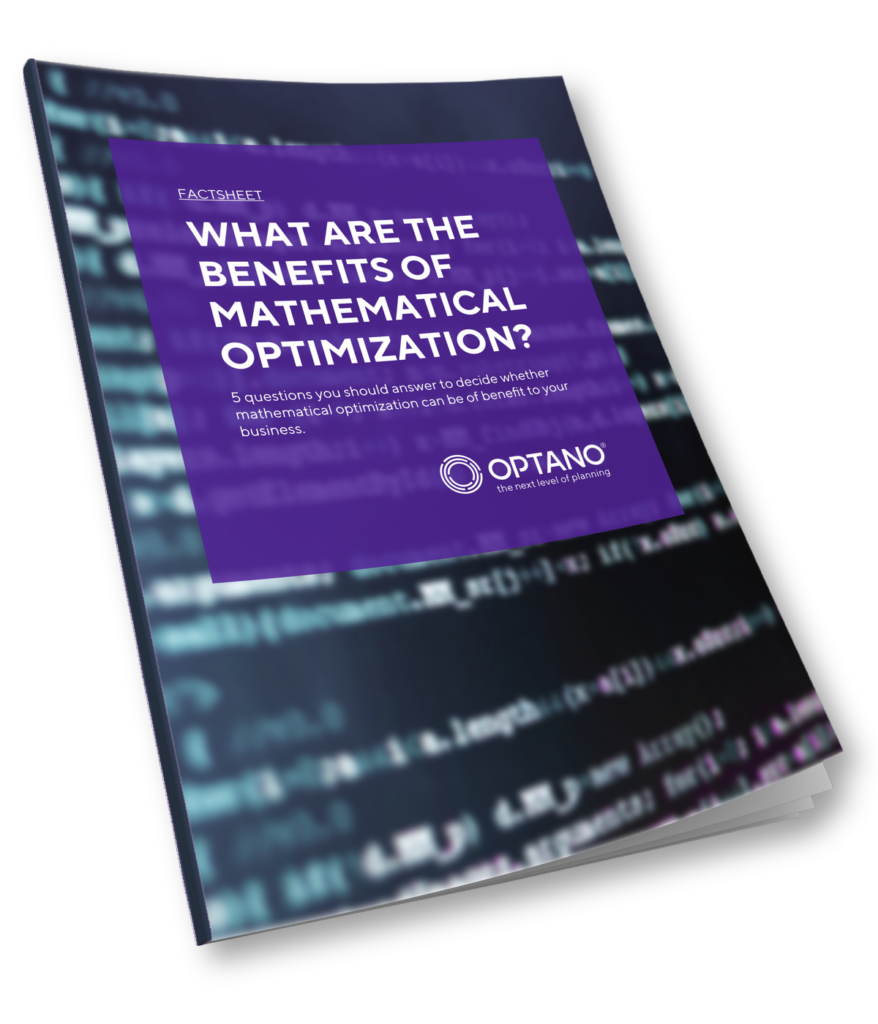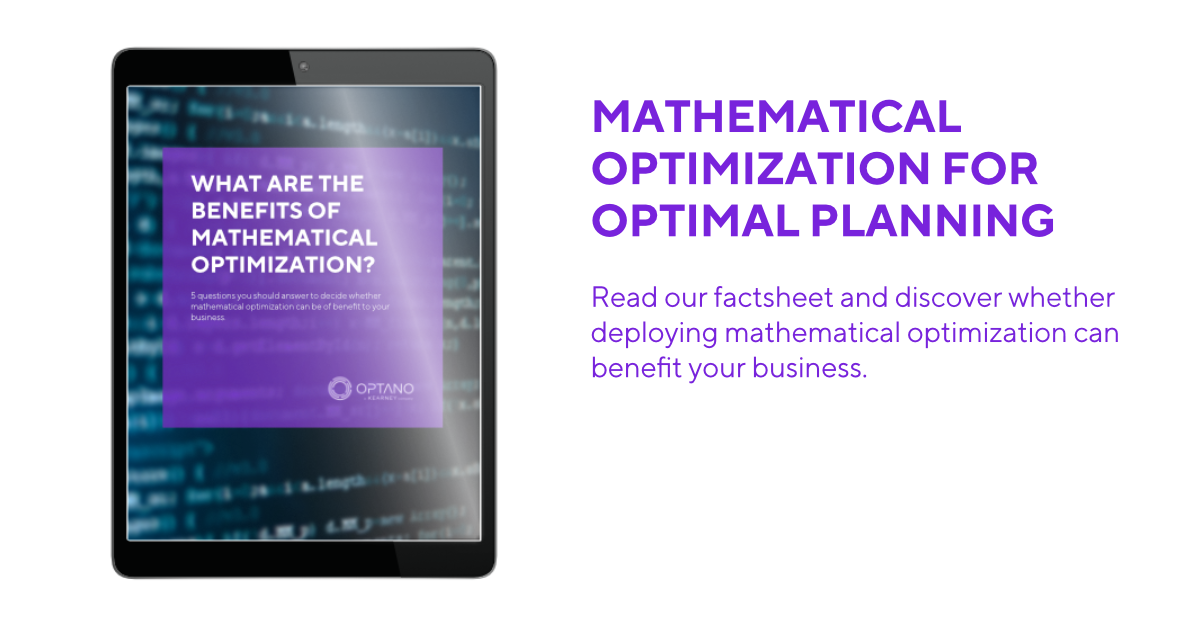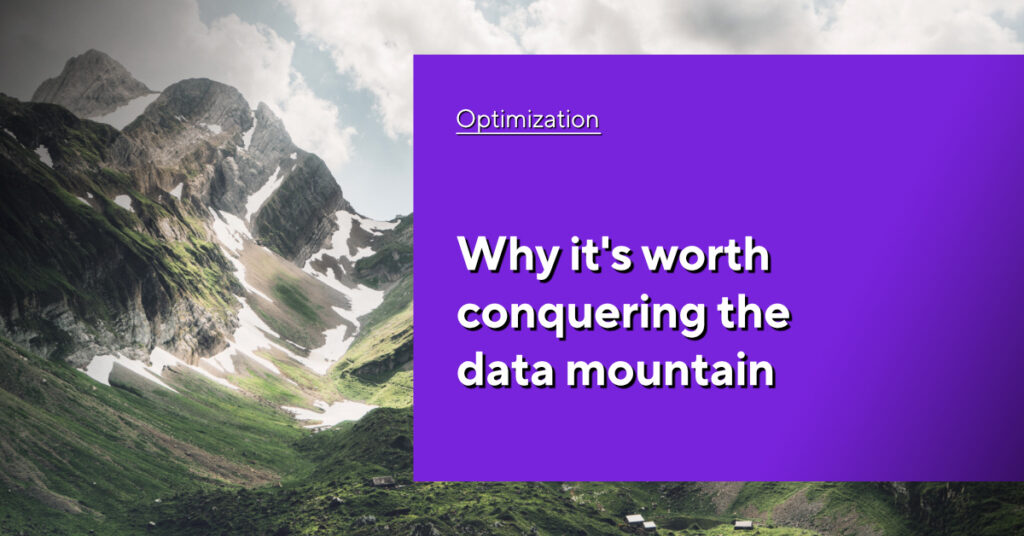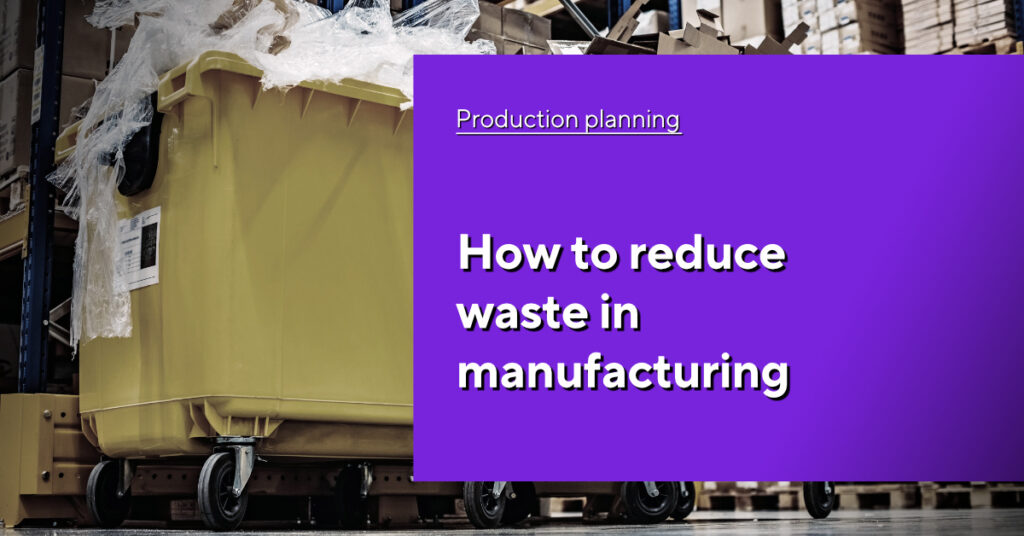What-if scenarios in
Supply chain planning
Recently my family and I went on a short weekend break and on the way there we suddenly found ourselves in dense fog and could only see a few meters in front of us. Particularly as we were in unfamiliar surroundings, we felt as if we had lost all sense of orientation, couldn’t see what was ahead of us and at one point were sure we had missed a turning in the road. Shrouded in mist we felt lost and uncertain.
Supply chain managers also face a lot of uncertainty when planning their supply chains, particularly since these have become more volatile over the past few years. Many planners may also feel like they are lost in dense fog because supply chain visibility is so limited and they can no longer clearly see what lies ahead and which decisions they should take.
In this article we explain how companies can achieve a bigger picture of their supply chains and gain more certainty in their decision-making so that they can respond to sudden changes and disruption in good time.
Supply chain disruptions are inevitable
Disruptions to the supply chain have been a hot topic ever since the outbreak of the Corona pandemic (we all remember the “toilet paper crisis”) but they are by no means a new phenomenon. Supply chain disruption was around long before 2020 and Corona: The list is long but two notable examples in recent history are the 2011 tsunami in Japan which caused supply chain problems for the automotive industry. And while the blockage of the Suez Canal by the Ever Given container ship is still fresh in our minds, many may have forgotten that an oil tanker also ran aground there in 2004, preventing container ships passing through, among them a ship full of Sony Playstations – exactly two weeks before Christmas.
According to a study by the McKinsey Global institute, companies experience, on average, a disruption to their supply chains of one to two months in duration every 3.7 years. Some of the causes are:
- economic upheaval
- sudden demand fluctuations (either an upsurge or plummet in demand)
- natural catastrophes/extreme weather events
- geo-political occurrences
- cyber-attacks
Most of these events are sudden and unpredictable, leaving companies helplessly exposed. However, with the right tools and approaches, it is possible to prepare for such events and take the necessary action to mitigate or even eliminate the impact on your supply chain. Let us look at some of the possibilities below:

Are you interested in our factsheet?
What are the benefits of mathematical optimization?
How to counter supply chain disruptions
Inventory cushions
For several decades, companies had relied on the just-in-time strategy for inventory management, i.e. raw materials, components and finished products are ordered from the supplier only when needed. This keeps inventory costs to a minimum, practically eliminates overproduction and keeps wastage at a low level. The severe disruptions to supply chains in recent years have been a wake-up call for many companies: just-in-time is indeed a very effective strategy – but only as long as the supply chain and production are running smoothly.
For this reason, it is advisable to also apply the just-in-case strategy. This means that you always have extra quantities of goods and raw materials to weather any storm in the supply chain. Of course, stockpiling in your warehouse is additional expense. Therefore, it is important to effectively plan and identify when goods, parts, components, etc. are needed: When are peak times for certain products? When might a supplier be affected by extreme weather conditions and not be able to deliver? In such cases, it is always better to increase inventory.
Localization/Near-shoring
When production in Southeast Asia came to a standstill with the outbreak of the Corona pandemic, the products and raw materials that European companies needed could not be delivered as planned. Many companies are now reviewing their supply chains and focusing on suppliers closer to home: either in their own country (localization) or in nearby countries (nearshoring). As a result, transportation times are much shorter and delivery reliability is higher. Some countries, such as the U.S., even offer incentives and funding to companies to encourage them to relocate.
This does not mean that suppliers in distant countries have to be dispensed with altogether, but for “critical” products and sectors in particular it can be worthwhile.
Diversification
Supply chain diversification means having a network of (additional) suppliers that span different sizes, locations and capabilities. The advantages are clear: if one supplier is suddenly unable to meet its commitments, you have another one to bail you out. This benefits your business, as well as your customers, because you can manage sales increases more smoothly. You can also mitigate the risk of a sudden increase in raw material prices as you have a broader supplier base with which to negotiate.
Diversifying your transportation options, such as considering different modes of transport for deliveries, is also advisable. This can even include building up your own fleet of vehicles so as not to be dependent on freight forwarders.
Supply chain transparency
Many problems in the supply chain are due to a lack of transparency. The more complex the supply chain, the more difficult it becomes to keep track of it all. Today’s supply chains accumulate huge amounts of data, and there are many different and possibly conflicting objectives and constraints that need to be considered. It’s no wonder that many companies quickly lose direction. The more transparent the supply chain is, the better overview you have.
With the help of advanced planning software that uses mathematical optimization methods such as predictive and prescriptive analytics, it is indeed possible to identify all the available alternatives and thus make the right future decisions. Sophisticated planning software like OPTANO also has a very powerful tool, namely what-if scenarios. These show companies the likelihood and outcome of future events such as demand trends and changes as well as possible risks in the supply chain, helping you to take action to avoid disruptions even before they occur.
More interesting articles
What exactly are what-if scenarios and how do they work?
What-if scenarios are the analysis of hypothetical situations that help you determine what would happen if certain parameters of a process were to be changed. By analyzing these changes in what-if scenarios, you can see how they would affect your production, your costs, your logistics, and ultimately your entire supply chain. This facilitates your decision-making immensely.
To do this, a mathematical optimization model of your company is created. This maps your real business, capturing all critical aspects of the supply chain or other areas of the business. In order for the model to work effectively, it must be fed with as much relevant data as possible. This can be data from your own company, e.g. KPIs from your supply chain, or external information such as meteorological data. By using an integrated solver, all the data is processed and read to find the best possible solutions to your problems. These are found by creating and analyzing thousands of “what-if” scenarios.
Strategic considerations can be made, such as: What would happen in the event of political unrest or a natural disaster at our main supplier’s location? Would focusing on onshoring be more cost-effective in the long run? Would it make more sense to build our own fleet of trucks to distribute our goods instead of relying on carriers? These and many other questions can be explored and compared across a range of scenarios to assess their impact on your business and supply chain. This allows you to identify risks and opportunities, based on which you can make optimal, proactive decisions to manage supply chain disruptions.
OPTANO for certainty in supply chain planning
If there is a willingness to use analytics as a basis for decision-making in your company, all that remains is to find the right software solution and the right partner for the implementation of supply chain analytics. With an optimization platform such as OPTANO that applies advanced supply chain analytics like prescriptive analytics, you can consider such issues as described above in various “what-if” scenarios. This way, you have a solid decision-making basis to achieve the best results for your supply chain planning challenges. OPTANO makes your entire planning processes efficient, fast and flexible, so disruptions won’t catch you unprepared in the future.
For more information on mathematical optimization and scenario planning, download our factsheet “What are the benefits of mathematical optimization?” Or contact our consultants who will be happy to answer your questions on this and other optimization issues.
When the fog clears...
OPTANO helps you make the right decisions when you lose your way in the fog, so to speak. What-if scenarios show you different paths to take enabling you to find the best way to manage your supply chain. Fortunately, we also chose the right road on our journey and were glad when the fog lifted and we could leave the feeling of uncertainty behind.
Have you got your factsheet on this topic yet?

In our factsheet “What are the benefits of mathematical optimization?” we ask 5 questions to help you assess whether mathematical optimization brings benefits to your organization.
To obtain our factsheet, all you need to do is enter your contact details in the space below. A pop-up window will then open to download the whitepaper. Please note that by providing us with your email address, you agree that we may contact you on this topic. You may revoke this agreement at any time by contacting privacy@optano.com.







